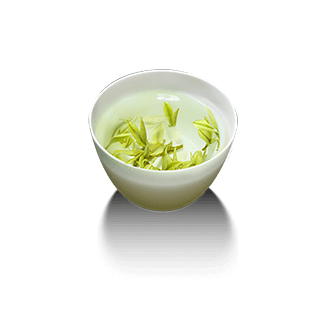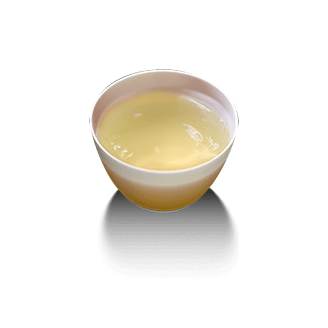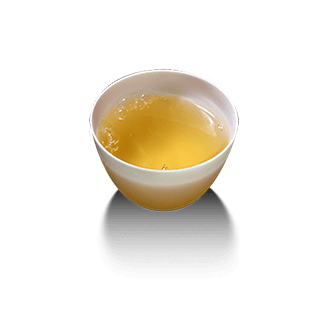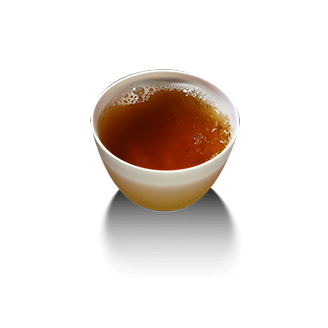
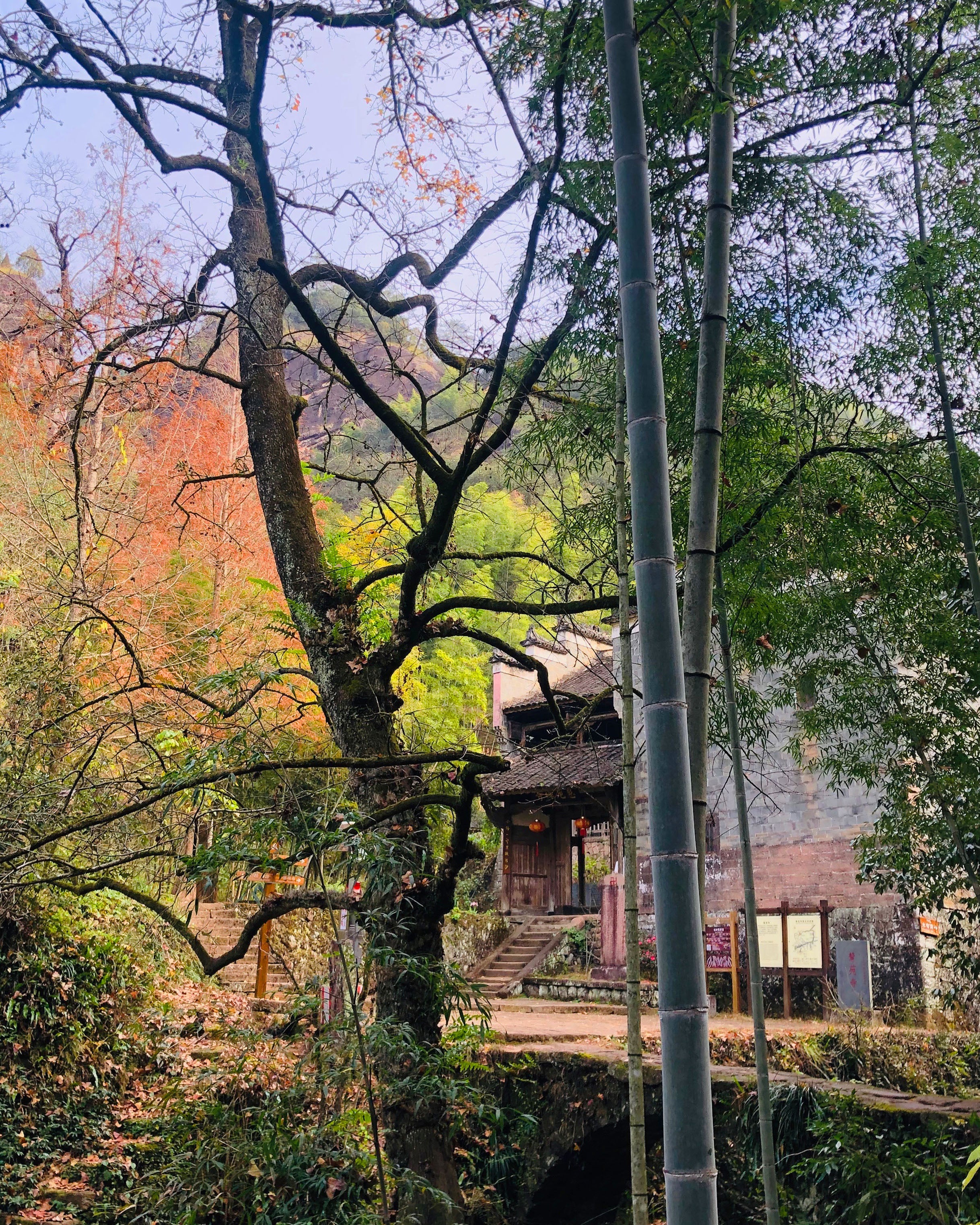
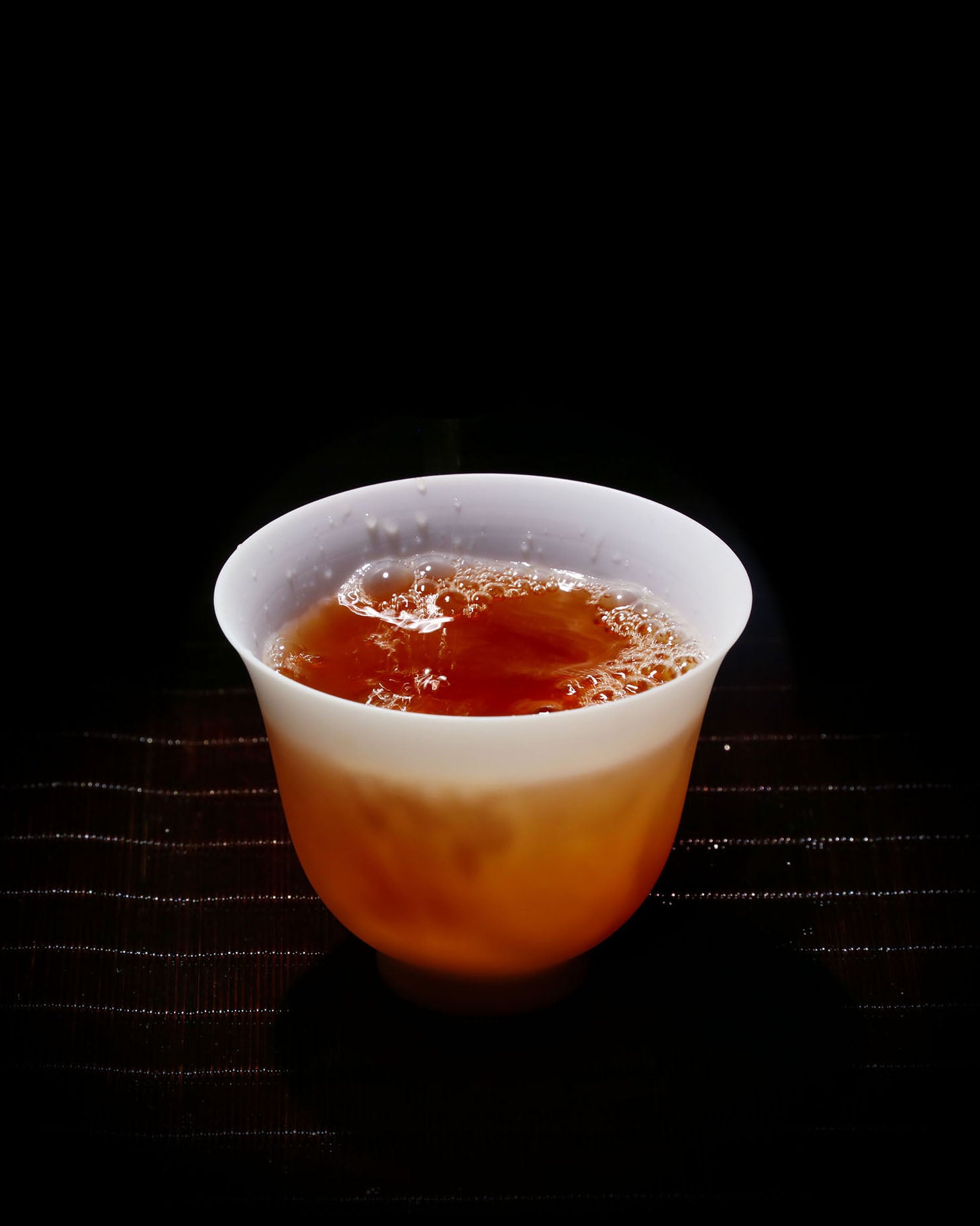
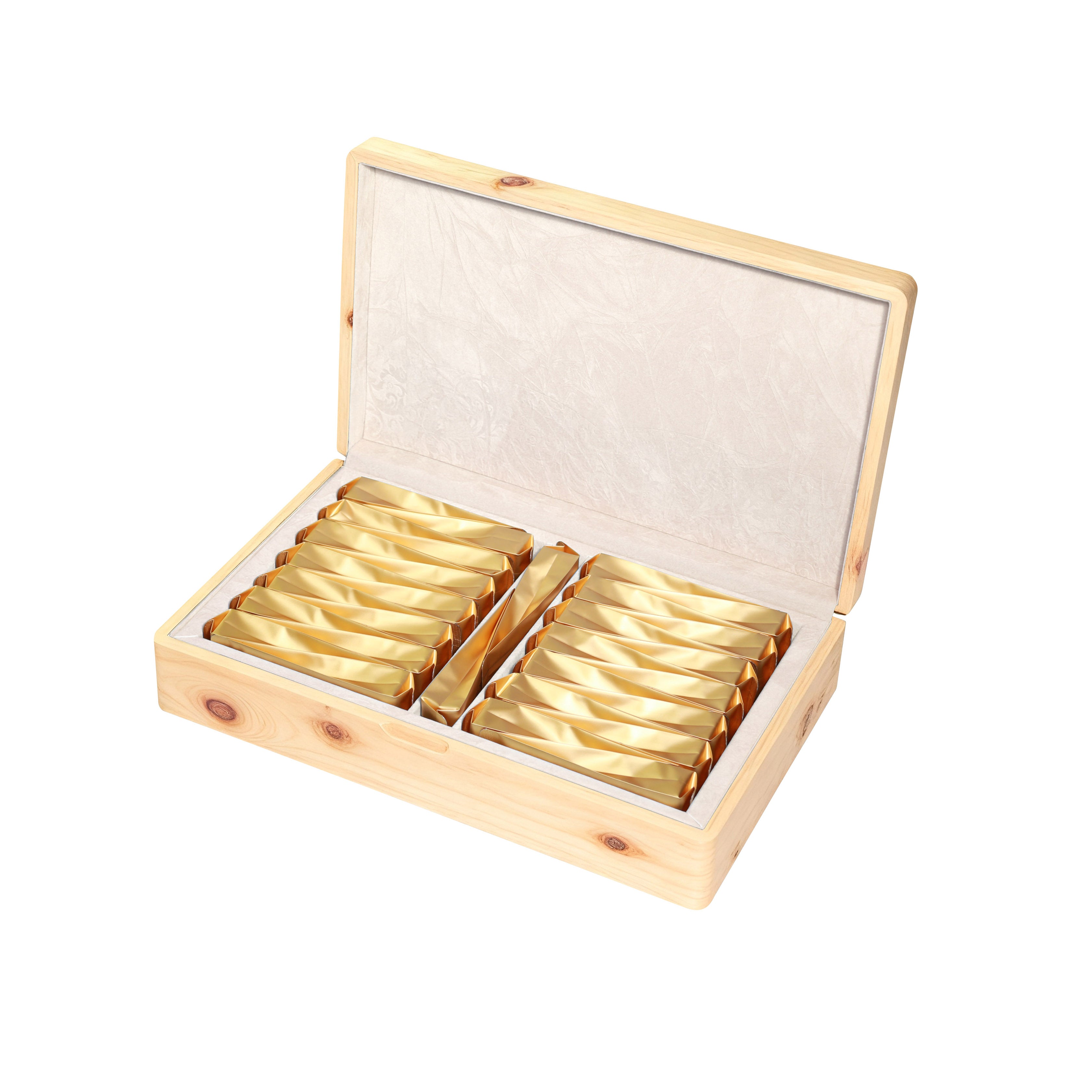
Ghostly Fragrance Da Hong Pao





Ghostly Fragrance Da Hong Pao

A Godsend Rare Variety, Huiyuan's Exquisite Aroma

Leaving Liuxiang Stream, we still had a section of mountain road to cover towards Huiyuan Keng. The vegetation along the way was lush, with branches and leaves interweaving overhead to form a canopy of shade. Occasional rays of sunlight filtered through the gaps, casting dappled spots on the ground. Up ahead, the area embraced by Danxia rock cliffs was none other than Huiyuan Keng—one of the iconic representatives of Wuyi Rock Tea’s "core Zhengyan producing areas." Having long heard of the world-famous Da Hong Pao from here, we hadn’t even caught a glimpse of the tea bushes yet, but the serene atmosphere of the mountains had already stirred our anticipation.
Halfway through the journey, we unexpectedly stumbled upon a quiet retreat. Looking up, there stood a thousand-year-old Zen temple hidden deep in the woods. A distant bell rang out from the temple, washing away the fatigue of the trip. Above the side house’s lintel, three carved stone characters—“Chi Cha Qu” (Have Tea)—caught our eyes instantly, warming our hearts in a flash. Though simple, these three words hold the Zen philosophy of “transcending words to touch the soul directly.”
This Zen temple is not large in scale. When I first saw it, I had no idea it was the renowned "Huiyuan Temple"—not until I spotted the couplet on the pillars flanking the main hall: "When guests arrive, never mind serving tea as wine; dwelling in the mountains, I’m content to have bamboos as neighbors."The lines are filled with the simplicity and open-mindedness of receiving guests in the wilderness. On second thought, I recalled that this is actually a famous couplet written by Zhu Xi, one of the most celebrated couplets in Wuyi Mountain! Reading it, a sense of familiarity and reverence for the ancient temple welled up in my heart, as if the air was infused with an extra touch of literary grace and tea aroma.

Wandering around to the outer side of the main hall, another couplet caught my eye: "The stream winding with fragrant flow purifies the heart; climbing the jade-pillar peak, the Buddha stands solemn." In just fourteen characters, the scenery around the temple was vividly depicted— the winding Liuxiang Stream in front of the gate and the towering Yuzhu Peak in the distance have all become part of the Zen charm, achieving a perfect blend of nature and humanity at this moment.
Stepping out of the Zen temple, there was a small stone bridge nearby. Green vines hung down from the bridge, and the stream under the bridge meandered downward, with quiet grass growing along the banks. Following the stream, I saw falling flowers drifting with the current from time to time. The beautiful scene of blooming petals made this tea-seeking journey even more poetic.
As I walked on, my feet gradually touched the land interwoven with rocks and red soil— this was exactly the core area of Huiyuan Keng. As a typical basin terrain, the soil is filled with rich gravel layers, which are both loose and breathable, and rich in various minerals. Coupled with the surrounding rock cliffs blocking the sun, the forest is almost "shaded from the sky", making it a god-given place for rock tea to grow.
Precisely because of this unique terroir, the famous tea varieties here have a strange and delicate fragrance. Especially the flagship Da Hong Pao, its aroma is mellow and long-lasting. It not only has the unique "rock rhyme" of Wuyi Rock Tea, but also lingers with an elegant orchid fragrance, with rich layers and a lingering charm.
And this year’s Huiyuan Keng" Ghostly Fragrance" Da Hong Pao is even more distinctive than in previous years—in the familiar pollen fragrance, an extra touch of floral aroma has been added, making it particularly charming.
Behind this unique flavor lies the craftsmanship of tea-making inheritors: they adhere to the ancient principle of "making tea according to the weather and the tea itself". During rolling, they closely monitor the subtle changes in the leaves; during fixation, they control the heat with precision; even in the roasting process, they adjust the temperature within tiny increments to achieve the perfect balance between the tea’s aroma and taste.
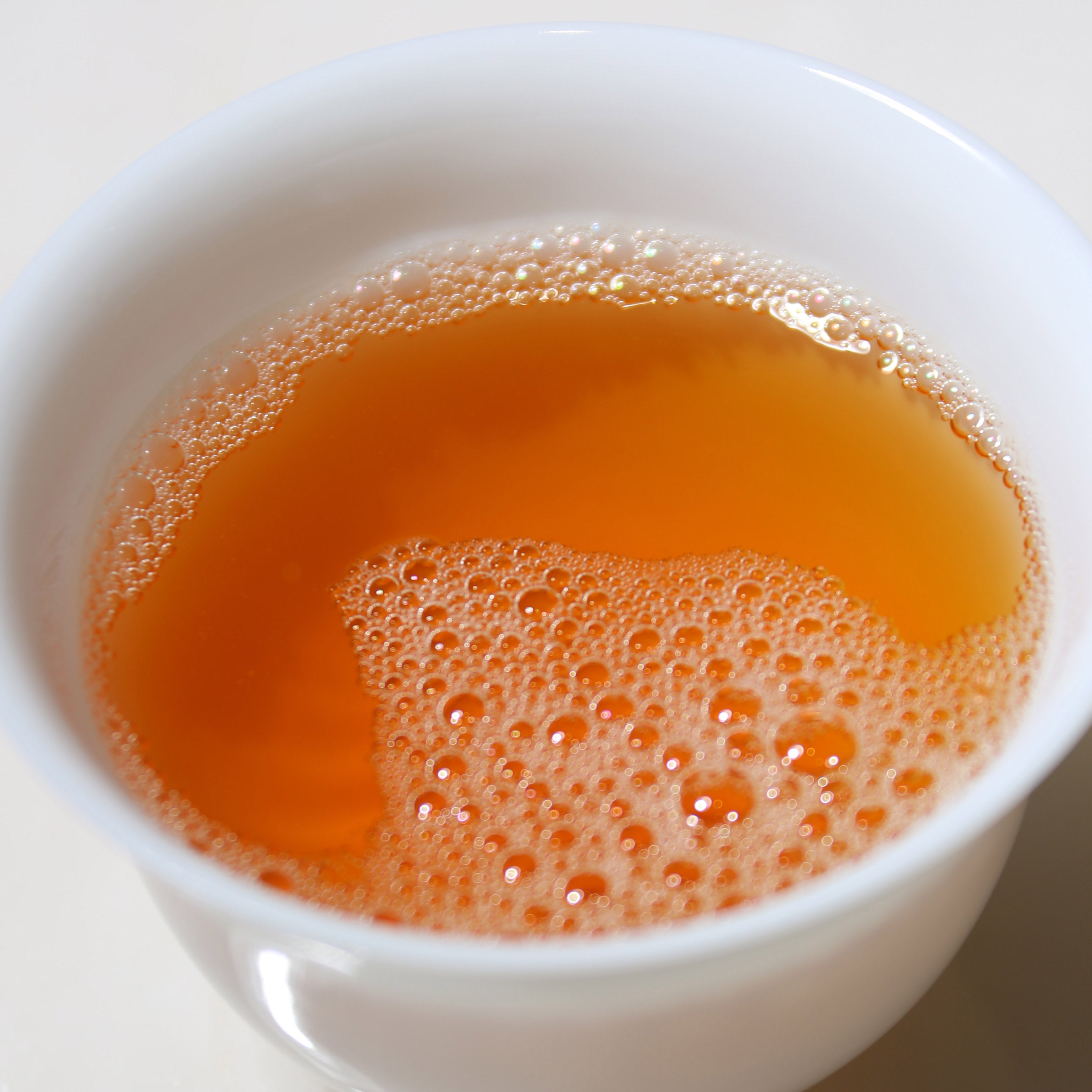
Once the tea is crafted, take a small amount and place it in a gaiwan, then pour boiling water at height. Lift the lid, and that exotic fragrance bursts forth eagerly, filling the nostrils instantly. Take a sip, and the aroma even "sinks" into the liquor—rich and long-lasting. The first taste reveals the delicacy of pollen; the second, the sweet freshness of nectar. Slipping into the mouth, it is full and rich, with a mellow, sweet and smooth taste that gently wraps around from the tip of the tongue to the throat.
Such aroma and taste are unforgettable once experienced. I think any lover of rock tea, upon arriving at Huiyuan Keng and savoring this cup of Da Hong Pao, how could they not be utterly enchanted?
Dayatang Ghostly Fragrance Da Hong Pao
Appreciation
The rocky bones give birth to a wondrous fragrance, and the pollen permeates the heart and soul.
Year: 2025
Grade: Premium Grade
Producer: Dayatang
Origin: Core Zheng Yan Area, Wuyi Mountain
Variety : Da Hong Pao
I. Dry Tea Appreciation
II. Smell the Aroma to Distinguish the Rhyme
III. Observe the Tea Liquor & Appreciate Its Color: A Visual Expression of Rock Tea's Connotation
IV. Taste and Appreciate the Rhyme
If the "pollen fragrance" is the "outer garment" of this tea, then the "rock rhyme" is its "framework". The two blend perfectly in taste, delivering a layered and progressive sensory experience:
V. Infused Leaves
Appreciating Ghostly Fragrance Da Hong Pao is more than just "drinking tea"—it is a dialogue with terroir. That hint of "pollen fragrance" is a gift from the Danxia rock cliffs; that touch of "rock rhyme" is the nourishment of gravelly soil and the perseverance of tea-making inheritors. Savoring a cup of this tea means achieving a profound gustatory resonance with the landscapes and humanistic heritage.

The liquor is orange-red and translucent, with a prominent golden rim that highlights its superior quality.
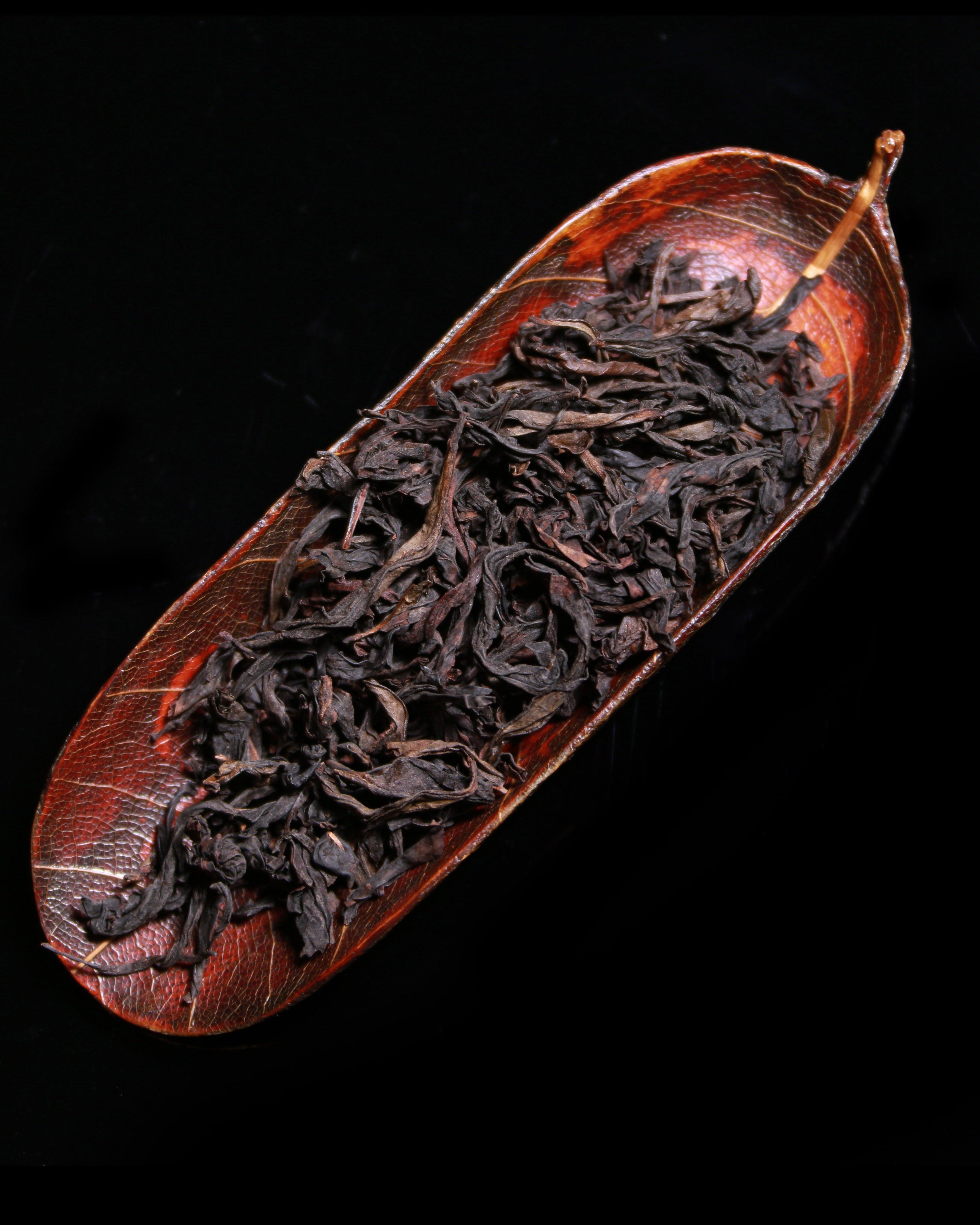
The dry tea Strands are plump, tight and naturally curled, with no crumbs. They appear glossy black with brownish-green hues, free of burnt edges.
Ghostly Fragrance Da Hong Pao
Brewing
Ghostly Fragrance Da Hong Pao
Brewing
spare parts
-
Teaware : It is recommended to use a gaiwan (local custom, which makes it easy to observe the color of the tea soup and the tea leaves) or a Yixing teapot (for accumulating aroma), with a capacity of 100-150ml.
-
Water source : Use only purified water; avoid mineral water and tap water.
-
Water temperature : 100℃ boiling water (Oolong tea requires high temperature to bring out its aroma).
-
Tea leaves : Take 8-10g of dry tea leaves (about 1/3 to 1/2 of the container, adjust according to personal taste).
Warm cup sanitary ware
Rinse the teaware with boiling water to raise the temperature of the teapot/bowl and prevent the tea from cooling down and affecting its flavor.
Add tea leaves to awaken the tea
Put the tea leaves into a warm teapot, shake it gently, and smell the aroma of the tea (the caramel, floral, or fruity aroma of rock tea). This step is called "shaking to release the aroma".
brewing
First infusion : Do not blindly follow the tea washing method. The first infusion is the essence of the tea! Pour water and pour out the tea immediately (about 10 seconds) to avoid prolonged steeping which will cause bitterness.
From the second infusion onwards : extend the steeping time by 5-10 seconds per infusion (adjust according to the concentration of the tea). After the fourth infusion, the steeping time can be increased appropriately.
Key techniques : Pour water from a high position to allow the water flow to impact the bottom of the tea leaves and release their aroma; drain the tea when pouring out the tea to avoid over-steeping.
Drinking
Pour the tea into a fairness cup, then into small teacups. First, smell the aroma (from the lid and the sides of the cup), then observe the color of the tea (amber from a low or medium heat, and red wine from a medium heat or aged tea), and finally sip it slowly to experience the "rocky flavor" (the mellowness, sweetness, and throat feel of the tea).
Key points
1. Never blindly follow the practice of rinsing tea. The first brew is the essence of the tea, praised by tea connoisseurs as the "revival soup." 2. Water is the most crucial element. If you are not familiar with the water used for brewing tea, choose qualified purified water. Do not use alkaline mineral water. (Various brands of commercially available mineral water have different water sources and quality indicators; so-called "high-quality mineral water" may cause loss of functional components and aroma suppression in tea.) For more information on water, please see the link > 3. Each brew should be completed within 20 minutes. If you cannot finish it immediately, store it in a container. When you want to drink it again, reheat the previously brewed tea; instantly, the room will be filled with a delightful aroma. Do not leave brewed tea in the gaiwan for an extended period (such as one or two hours) before brewing again. This is due to the oxidation reaction; the oxidation of tea polyphenols deepens, weakening the original fresh and crisp flavor, and causing aromatic substances to evaporate, resulting in a bland taste. This brewing method renders what should be a rare and exceptional tea utterly unremarkable, leaving only a lackluster drinking experience. This technique applies to all Chinese teas with outstanding aroma and flavor.
The exceptions are aged Chinese teas and those with a heavily roasted and fermented style, which can be steeped slowly, brewed slowly, or boiled slowly.
For brewing aged tea, please refer to "A Guide to Slow-Brewing Aged Tea".
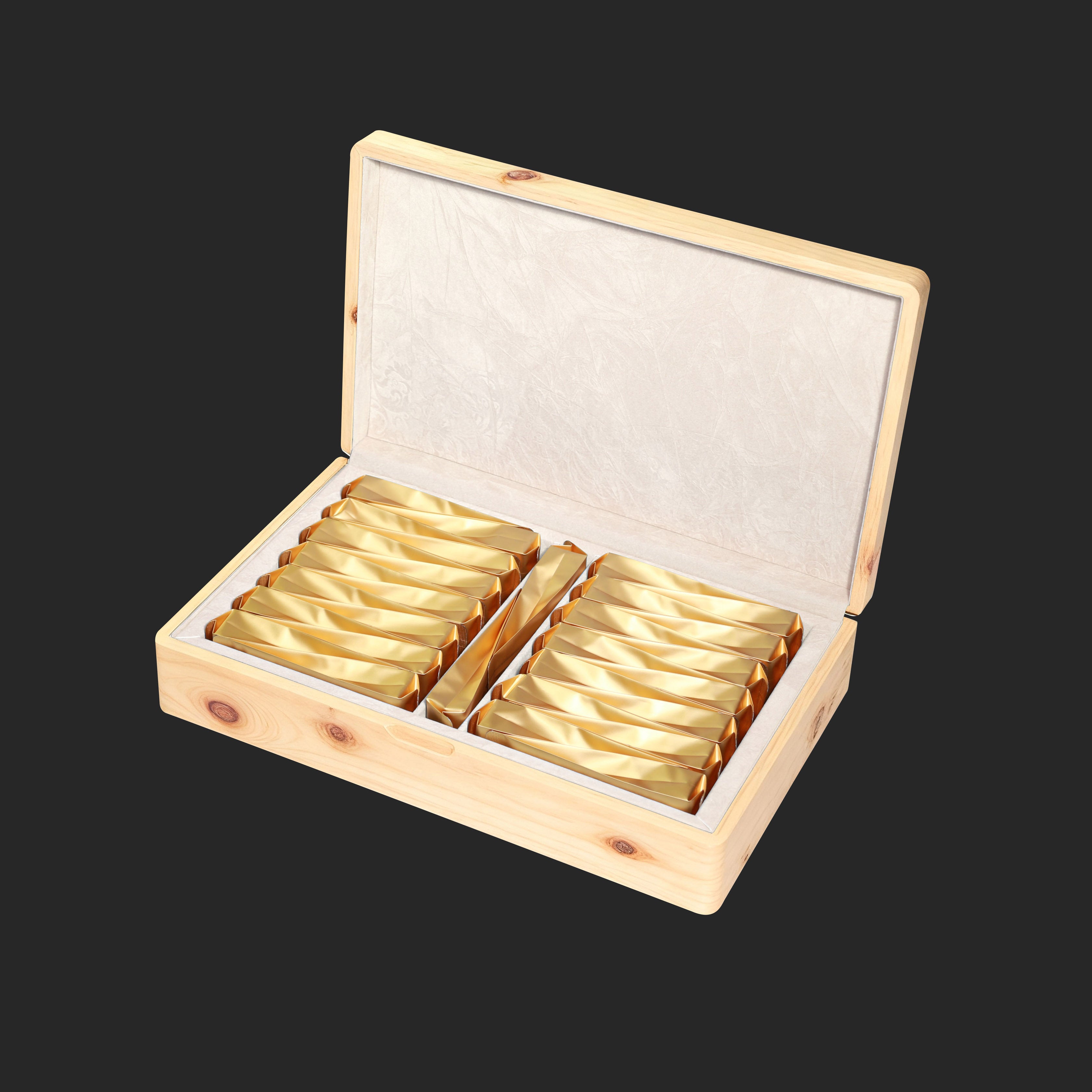
Pouch packaging: Blocks oxygen, light, moisture. Preserves original aroma, nutrients. Longer shelf life.
Dayatang Ghostly Fragrance Da Hong Pao
storage

Stable, dry, light-proof and odor-free
Storage Guide
Frequently asked questions
Use the FAQ section to answer your customers' most frequent questions.
Order
Yes, we ship all over the world. Shipping costs will apply, and will be added at checkout. We run discounts and promotions all year, so stay tuned for exclusive deals.
It depends on where you are. Orders processed here will take 5-7 business days to arrive. Overseas deliveries can take anywhere from 7-16 days. Delivery details will be provided in your confirmation email.
You can contact us through our contact page! We will be happy to assist you.






